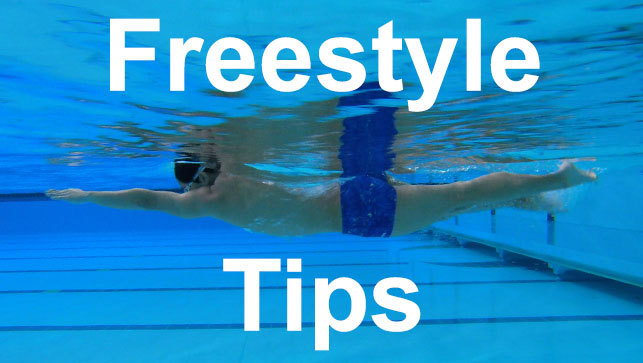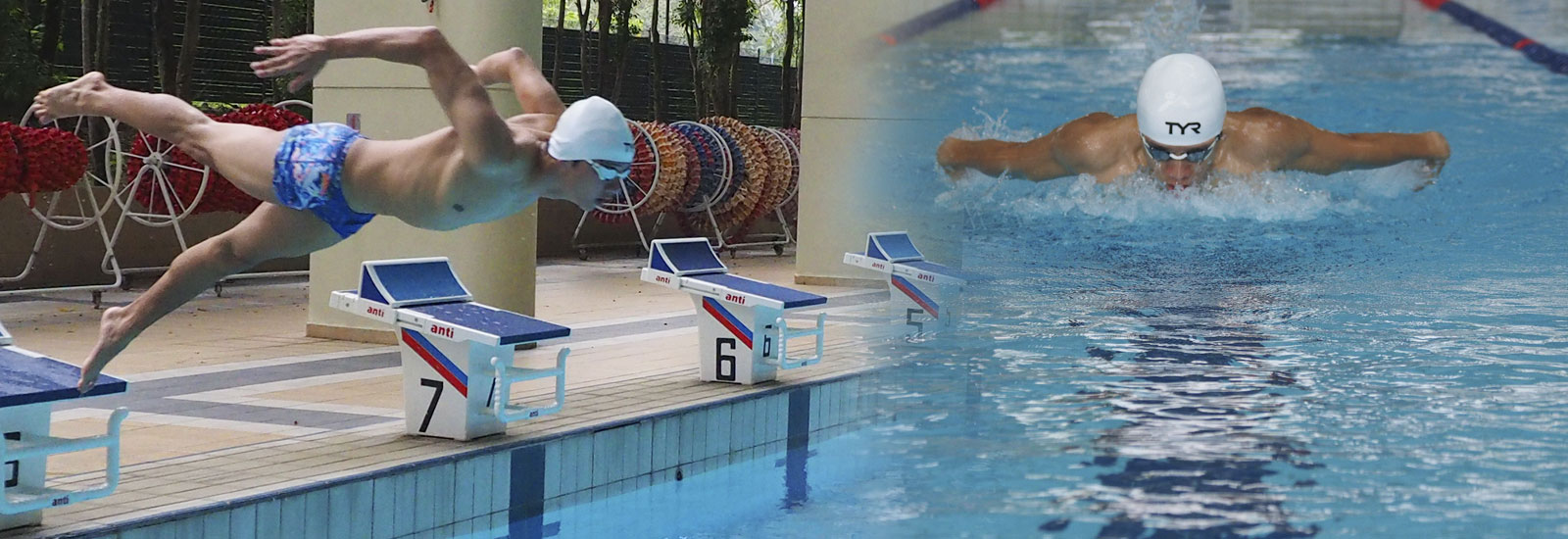Tips to correct the most common mistakes in Freestyle
Freestyle, also known as front crawl, is one of the most common and efficient swimming strokes. Here are some tips to help you improve your freestyle technique:
Timing and Rhythm:
- Coordinate your arm movements with your leg kick and body rotation to maintain a smooth and efficient rhythm
- Avoid overreaching or rushing through the stroke phases
Practice Drills:
- Incorporate drills into your practice routine to work on specific aspects of your freestyle technique, such as catch-up drill, Fist drill, and single-arm drills and other Related drills can check on the website
Consistency and Patience:
- The freestyle technique takes time to develop. Be patient and consistent with your practice
- Record yourself swimming or seek feedback from a coach or experienced swimmer to identify areas for improvement
- You can Find a swimming coach click on link
Body position
The most important in freestyle body position is the streamline. In streamline, you make your body as narrow as possible to help reduce front drag. Less water resistance will allow you to swim faster and use less power.
What reasons can cause the incorrect position of the body position?
- Poor understanding of the centre of gravity and buoyancy
- The high position of the head during the glide or breathe phase
Wrong:

Here’s what to do instead
- Try to keep the angle of attack of the water 5 to 7 degrees to avoid deep body position in the water
- Keep your head in line with your body
Correct:

Tips:
- Swimming with a pull buoy between the ankle will help to keep legs at a high horizontal point
- Minimize resistance by keeping your body streamlined during each stroke
- Keep your body horizontal and parallel to the water’s surface
Drills Related:
Mushroom float
Streamline float
Progression Floating Star Version 1
Progression: Freestyle kick version 1
One-arm extended freestyle kick no breath
Body rotation
Body rotation minimizes front drag in the water and helps you inhale quickly. The body’s rotation affects the mechanics of the propulsion phase of the pull and recovery phase pull.
What reasons can cause the incorrect position of the body rotation?
- Your arms and legs. Do cross the center line of the body while swimming
- During the end of the pull, the arm moves too far behind the back
- Kicks to the right or left side instead of up and down kick
- During inhalation, the head moves out of the streamlined position
- Inhalation on one side occurs an imbalance in the rotation of the body
Wrong:
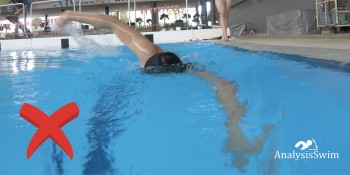
Here’s what to do instead
- A roll of 40 ° accompanies each stroke to 65 ° on each side
- The head is in line with the body
- When we glide forward, your arms and legs do not cross the centre line of the body but are very close to it to reduce frontal resistance
Correct:

Tips:
- During the stroke, try to rotate the body while keeping the head in place. You must use the core in order to pair your hips and shoulders. It will help you to keep your body in a perfect, streamlined position along the surface of the water
- This rotation allows you to engage more powerful muscle groups and reduces strain on your shoulders
Drills Related:
Backstroke or Freestyle side kick with one arm on the side
Freestyle kick Drilling
One-arm extended freestyle kick with breathing on side
Windmill Freestyle drill
Swivel freestyle drill
Breath
Breathing and enriching the blood with oxygen is the most crucial element in swimming. No one person can swim long distances while holding their breath. Some people can swim 3 meters while another person can swim 50 meters.
A good and quick breath is the key to fast swimming and fast enriching muscle with oxygen.
What reasons can cause incorrect movement of the breath?
- Head goes too high while breathing
- Looking back while breathing
Wrong:

Here’s what to do instead
- Head and body move in longitudinal axis while breathing
- Keep your head in a neutral position, looking down and slightly forward
- Turn your head to the side while your arm is recovering above the water to take a breath
Correct:

Tips:
- One goggle out of the water while another goggle into the water
- Inhale always using your mouth
- Avoid lifting your head too high, as this can cause your hips and legs to drop, creating drag
- Exhale slowly and steadily underwater to empty your lungs before each breath
- Practice bilateral breathing (breathing on both sides) to balance your stroke and improve your endurance
Drills Related:
Controlled arms freestyle drill
Pencil float
Swivel freestyle drill
Pull
The freestyle pull is the main element to move the body in front. It is essential to understand how to pull effectively to move your torso forward.
There are many different kinematic techniques in freestyle and variations of fast stroke. We will describe in the following article more detail about the stroke and their varieties and how they affect the entire swimmer’s technique.
What reasons can cause incorrect movement of the pull?
- Elbow dropping on entry
- Short rotation of the body. It will cause your hand to come back across the side, increasing the recovery phase
- Fingers point inward or upward while pulling
- The body pushes upward while pulling
- The elbow touches the water before the palm
- The hand drops while breathing
Wrong:
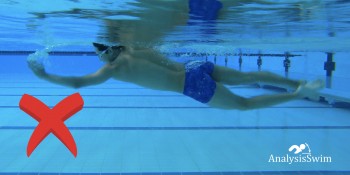
Here’s what to do instead
- Recovery arm with a high elbow, fingers pointed down and close to the surface of the water
- During recovery, fingers and forearm relaxed
- Recover arm forward along a straight line with shoulder
- Your fingertips should enter the water first
- High elbow position when catching water and pull
- Start pushing the body forward
- Finish your pull after the arm cross the hips line
- Keep your strokes long and smooth, avoiding excessive splashing
Correct:

Tips:
- With a good stroke, you should feel caught in the water and propose your body forward. Pressure in the water is created by resting the palm and forearm in the water. From the moment of catching the water to the end of the stroke, the speed of the pull should accelerate
- Do scull in different phases
- Fingertips should enter, reaching straight forward in streamline with the palm facing down. Then, the fingers should be pointed directly to the bottom of the pool as the elbow bends in the catch and pull phases of the stroke
Drills Related:
Fist Freestyle swim drill
Zipper Freestyle drill
Controlled arms freestyle drill
Freestyle recovery with high elbow on land
Kick
Kicking in freestyle provides stabilisation of the body and help to keep the body in a streamlined position concerning the water’s surface.
Good coordination of the legs with the hands helps push the body forward during the stroke.
What reasons can cause incorrect movement of the kick?
- Legs are very deep during kicks
- The knees after kick remain very deep and do not return to the surface of the water
- During the kick, the toes pointed down
- While kicking, the hips are very deep concerning the surface of the water
- Legs open wide
Wrong:
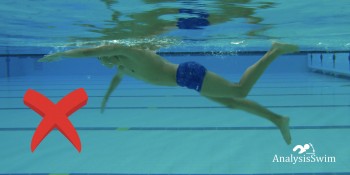
Here’s what to do instead
- Legs should be in a streamlined position relative to the surface of the water
- The toes are pointing backwards and inward, almost touching each other
Correct:

Tips:
- Your flexibility in the ankle will play an essential role in effective kicking
- Always do a fast and steady kick; it has become a muscle memory habit that will allow you to swim faster. For a good kick, you must feel like a “whip” kick with your legs
Drills Related:
Freestyle kick while sitting on the edge of the pool
Freestyle kick with arms on the edge of the pool side
One-arm extended freestyle kick with breathing on side
